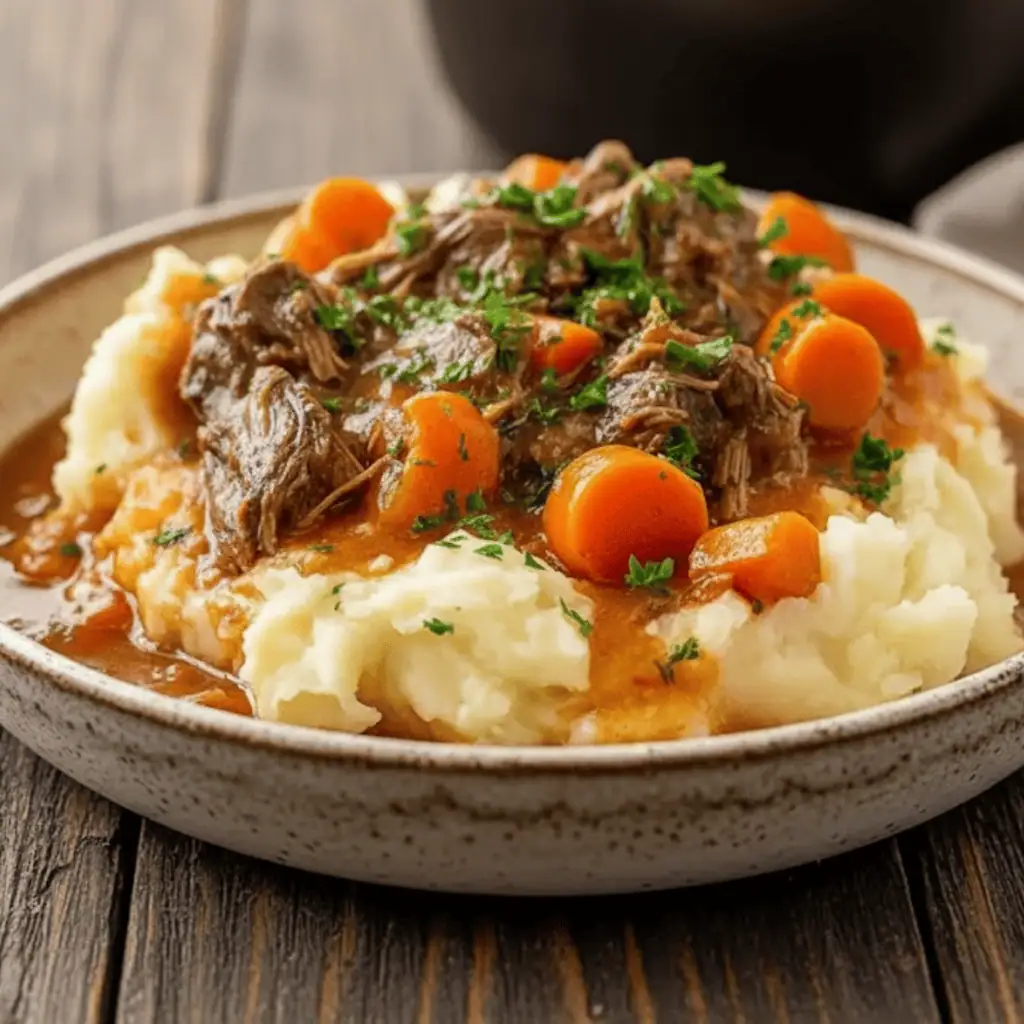Discover the Best Fall Apple Cider Stew Recipe for Autumn Bliss

Introduction to Fall Apple Cider Stew
As the leaves start to change and the air turns crisp, there’s nothing quite like the alluring aroma of Fall Apple Cider Stew simmering on the stove. This comforting dish is the perfect embodiment of the season, combining the sweet, tangy flavors of fresh apples and apple cider with an array of hearty vegetables and warming spices. Whether you’re looking for a cozy dinner to enjoy on a chilly evening or a nourishing meal to share with loved ones, Fall Apple Cider Stew is sure to become a new autumn favorite.
The beauty of this stew lies in its ability to capture the essence of fall. The juicy apples, fragrant cinnamon, and rich broth come together to create a symphony of flavors that will transport you to a cozy, autumn-inspired oasis. As you savor each spoonful, you’ll be rewarded with the comforting warmth and satisfaction that only a homemade, seasonal dish can provide.
In this comprehensive guide, we’ll dive into the world of Fall Apple Cider Stew, exploring the key ingredients, step-by-step preparation, and a variety of delicious variations to suit your taste buds. So, let’s get started on this delightful journey and discover why this stew is the ultimate fall comfort food.
Ingredients for Fall Apple Cider Stew
The beauty of Fall Apple Cider Stew lies in its simple yet flavorful ingredient list. By using the freshest, seasonal produce and high-quality apple cider, you can create a dish that truly captures the essence of the autumn season. Here’s what you’ll need:
- Apples (preferably Granny Smith or Honeycrisp) – These tart and crisp apples hold their shape well during the long simmering process, adding a wonderful texture and robust apple flavor to the stew.
- Apple Cider – The heart and soul of this dish, fresh apple cider lends its sweet, autumnal notes and helps create the stew’s signature broth.
- Onions – Diced onions add depth, aroma, and a touch of savory sweetness to the stew.
- Carrots – Carrots not only contribute vibrant color but also a delightful crunch and earthy flavor.
- Celery – Crisp celery stalks help balance the sweetness of the apples and provide a subtle, aromatic base.
- Garlic – Minced garlic enhances the overall flavor profile and ties the ingredients together.
- Chicken or Vegetable Broth – The broth serves as the foundation for the stew, allowing the other ingredients to shine.
- Cinnamon Sticks – Whole cinnamon sticks infuse the stew with their warm, comforting aroma and subtle spice.
- Thyme – Fresh or dried thyme adds an earthy, herbal note that complements the apple and cider flavors.
- Bay Leaves – Bay leaves lend a subtle, woodsy depth that rounds out the stew’s flavor profile.
- Salt and Pepper – Judicious seasoning with salt and pepper enhances the overall taste.
- Optional: Pork or Chicken – For those seeking a heartier meal, adding cubed pork or chicken can provide an extra boost of protein.
The key to a truly exceptional Fall Apple Cider Stew lies in the quality of the ingredients. Seek out locally sourced, fresh produce whenever possible, and choose a high-quality apple cider that is rich, fragrant, and bursting with autumn flavor. By starting with the best ingredients, you’ll be well on your way to creating a comforting, crave-worthy dish.
Preparation Steps
Making Fall Apple Cider Stew is a straightforward process that allows the natural flavors of the ingredients to shine. Follow these simple steps to create a cozy and delicious stew:
- Prepare the Ingredients: Begin by peeling, coring, and dicing the apples into bite-sized pieces. Chop the onions, carrots, and celery into uniform, small pieces. Mince the garlic and set all the prepared ingredients aside.
- Sauté the Vegetables: In a large pot or Dutch oven, heat a drizzle of olive oil over medium heat. Add the chopped onions, carrots, and celery, and sauté for 5-7 minutes, stirring occasionally, until the vegetables are tender and fragrant.
- Add the Apples and Seasonings: Once the vegetables are softened, stir in the diced apples, garlic, cinnamon sticks, thyme, and bay leaves. Continue cooking for an additional 2-3 minutes, allowing the flavors to meld.
- Pour in the Liquids: Slowly pour in the apple cider and chicken or vegetable broth, making sure to scrape up any browned bits from the bottom of the pot. Bring the mixture to a gentle simmer.
- Simmer and Adjust: Reduce the heat to low, cover the pot, and let the stew simmer for 45-60 minutes, or until the apples and vegetables are tender. Taste the stew and adjust the seasoning with salt and pepper as needed.
- Thicken to Desired Consistency: If you prefer a thicker stew, you can create a roux by melting a tablespoon of butter in a small saucepan and whisking in a tablespoon of all-purpose flour. Gradually stir this roux into the stew and let it simmer for a few more minutes until the desired consistency is achieved.
The key to perfecting this Fall Apple Cider Stew is to allow the flavors to meld and the apples to soften during the long simmering process. The result should be a beautifully balanced, aromatic, and comforting dish that will warm you from the inside out.
Variations of Fall Apple Cider Stew
While the classic version of Fall Apple Cider Stew is a true delight, there are plenty of ways to put your own spin on this seasonal dish. Here are a few delicious variations to consider:
Vegetarian and Vegan Options
For our plant-based friends, you can easily adapt this stew to be vegetarian or vegan-friendly. Simply omit the pork or chicken and use vegetable broth instead of chicken broth. You can also add in extra vegetables, such as diced butternut squash or cubed sweet potatoes, to create a heartier, meatless version.
Flavor Variations
To add even more depth and complexity to your Fall Apple Cider Stew, consider incorporating different spices or herbs. A dash of ground ginger, a sprinkle of nutmeg, or a pinch of crushed red pepper flakes can lend a unique twist to the flavors. You could also replace the thyme with fresh rosemary or sage for a more earthy, savory profile.
Serving Suggestions
Fall Apple Cider Stew pairs beautifully with a variety of sides and accompaniments. Serve it with a crusty bread, such as a rustic sourdough or buttery biscuits, to soak up the delicious broth. A simple green salad or roasted root vegetables can also make for a well-rounded and satisfying meal.
Nutritional Benefits of Fall Apple Cider Stew
While Fall Apple Cider Stew is undoubtedly a comforting and indulgent dish, it also boasts a range of nutritional benefits that make it a smart choice for your autumn dining needs. Let’s take a closer look at the healthy ingredients that make this stew a nourishing and well-balanced meal.
Apples, the star of the show, are packed with fiber, vitamins, and antioxidants that can support a healthy immune system and digestive function. Carrots and celery add a nutritious crunch, providing essential vitamins, minerals, and phytonutrients. The aromatic herbs and spices, such as cinnamon and thyme, not only enhance the flavor but also offer various health-promoting properties.
By incorporating a variety of fresh, seasonal produce and using high-quality apple cider, this stew strikes a perfect balance between indulgence and wellness. It’s a warm, satisfying meal that nourishes both your body and your soul, making it the ultimate fall comfort food.
More Related Recipes You Might Enjoy
In addition to the cozy and comforting Fall Apple Cider Stew, you can explore a variety of other seasonal recipes that showcase the flavors of autumn. From delightful apple-based desserts to savory harvest-inspired dishes, these options will help you embrace the spirit of the season and create a well-rounded menu of delicious fall-themed meals.
FAQs About Fall Apple Cider Stew
Q1: Can I use frozen apples or apple cider for this stew, and how will it affect the taste?
Yes, you can use frozen apples and apple cider for Fall Apple Cider Stew. However, keep in mind that frozen apples may have a softer texture once thawed, which can affect the stew’s consistency. The taste of frozen apple cider is generally similar to fresh, but it may lack some of the fresh cider’s brightness. To compensate, consider adding a splash of fresh lemon juice or a bit of extra cinnamon to enhance the flavors.
Q2: What kitchen equipment do I need to make Fall Apple Cider Stew?
To make Fall Apple Cider Stew, you will need a large pot or Dutch oven for cooking, a cutting board, a sharp knife for chopping ingredients, and measuring cups and spoons for accurate ingredient measurements. Additionally, a wooden spoon for stirring and a ladle for serving can be helpful. If you prefer a smoother texture, an immersion blender can be used to purée part of the stew before serving.
Q3: How can I make Fall Apple Cider Stew spicier or more flavorful?
To add more spice and depth to your Fall Apple Cider Stew, consider incorporating ingredients such as red pepper flakes, ginger, or even a dash of cayenne pepper. You can also enhance the stew’s flavor by adding a splash of apple brandy or a bit of balsamic vinegar. Additionally, experimenting with herbs like rosemary or sage can elevate the overall taste profile, making it more robust and aromatic.
Q4: How long can I store leftover Fall Apple Cider Stew, and what’s the best way to reheat it?
Leftover Fall Apple Cider Stew can be stored in an airtight container in the refrigerator for up to 3-4 days. For longer storage, you can freeze it for up to 3 months. To reheat, gently warm the stew on the stovetop over medium heat, stirring occasionally until heated through. If reheating from frozen, it’s best to thaw it overnight in the refrigerator before warming it on the stove. You may want to add a splash of broth or water to restore the desired consistency.
Conclusion
Fall Apple Cider Stew is the ultimate autumn comfort food, seamlessly blending the sweet, tangy flavors of fresh apples and cider with a hearty, nourishing broth and an array of seasonal vegetables. This cozy dish is not only a delight for the senses but also a celebration of the best that the harvest season has to offer.
Whether you’re looking to warm up on a chilly evening or want to create a memorable meal for family and friends, Fall Apple Cider Stew is sure to become a cherished recipe in your autumn repertoire. So, gather your ingredients, dive into the simple preparation, and embrace the comforting embrace of this delightful seasonal dish. Bon appétit, and happy fall!
Print
Discover the Best Fall Apple Cider Stew Recipe for Autumn Bliss
- Total Time: 75 minutes
- Yield: 6 servings 1x
Description
Fall Apple Cider Stew is the ultimate autumn comfort food, seamlessly blending the sweet, tangy flavors of fresh apples and cider with a hearty, nourishing broth and an array of seasonal vegetables.
Ingredients
4 cup diced apples
2 cup apple cider
1 cup diced onions
1 cup diced carrots
1 cup diced celery
3 cloves minced garlic
4 cup chicken or vegetable broth
2 cinnamon sticks
1 teaspoon dried thyme
2 bay leaves
1 teaspoon salt
1/2 teaspoon black pepper
Optional: 1 pound cubed pork or chicken
Instructions
1. 1. Prepare the Ingredients: Begin by peeling, coring, and dicing the apples into bite-sized pieces. Chop the onions, carrots, and celery into uniform, small pieces. Mince the garlic and set all the prepared ingredients aside.
2. 2. Sauté the Vegetables: In a large pot or Dutch oven, heat a drizzle of olive oil over medium heat. Add the chopped onions, carrots, and celery, and sauté for 5-7 minutes, stirring occasionally, until the vegetables are tender and fragrant.
3. 3. Add the Apples and Seasonings: Once the vegetables are softened, stir in the diced apples, garlic, cinnamon sticks, thyme, and bay leaves. Continue cooking for an additional 2-3 minutes, allowing the flavors to meld.
4. 4. Pour in the Liquids: Slowly pour in the apple cider and chicken or vegetable broth, making sure to scrape up any browned bits from the bottom of the pot. Bring the mixture to a gentle simmer.
5. 5. Simmer and Adjust: Reduce the heat to low, cover the pot, and let the stew simmer for 45-60 minutes, or until the apples and vegetables are tender. Taste the stew and adjust the seasoning with salt and pepper as needed.
6. 6. Thicken to Desired Consistency: If you prefer a thicker stew, you can create a roux by melting a tablespoon of butter in a small saucepan and whisking in a tablespoon of all-purpose flour. Gradually stir this roux into the stew and let it simmer for a few more minutes until the desired consistency is achieved.
Notes
For vegetarian or vegan options, omit the pork or chicken and use vegetable broth instead of chicken broth. You can also add extra vegetables like butternut squash or sweet potatoes.
- Prep Time: 15 minutes
- Cook Time: 60 minutes
- Category: Soup
- Method: Stovetop
- Cuisine: American
Nutrition
- Serving Size: 1 bowl
- Calories: 250
- Sugar: 10g
- Sodium: 800mg
- Fat: 5g
- Saturated Fat: 1g
- Unsaturated Fat: 3g
- Trans Fat: 0g
- Carbohydrates: 40g
- Fiber: 5g
- Protein: 15g
- Cholesterol: 30mg
Keywords: Fall, Apple, Cider, Stew






